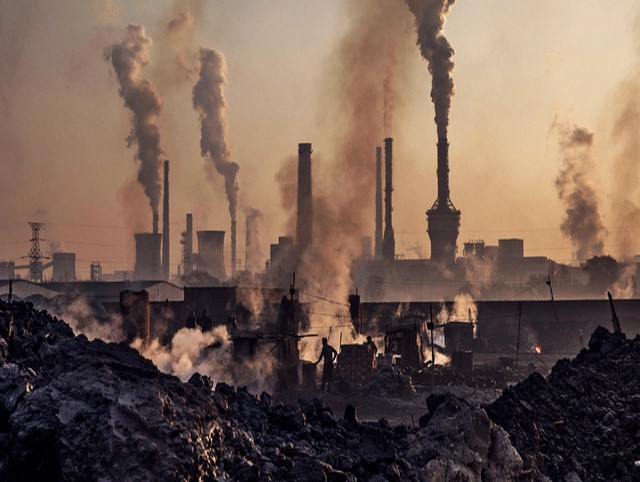Most of the pollution on earth can be traced back to industries of some kind. However, industrial pollution itself is a main contributor for widespread environmental degradation in Pakistan. As it enlists the country amongst the 12 Asian nations, out of a total of 15, where Industrial pollution is recorded at severe and unacceptable levels. According to that study more than 6.5 million people are hospitalized annually due to Industrial pollution related illnesses in the country, largely in Karachi.
Karachi is the financial hub of Pakistan and revenue engine of national economy. The port city was once widely regarded as the best urbanized and cultured city. But at present it has been ranked among the world’s most polluted cities because of the level of hazardous particles in the atmosphere. The reason is besides tremendous vehicle emissions, chimneys of numerous industrial units emit smoke 24/7, each equivalent to emissions of 1,000 cars. While the metropolitan leads in dumping of most of the country industrial effluent and untreated wastewater directly into the Arabian Sea. Just have a look, how;
Karachi Industrial Estates’ Effluent
Industrial pollution leads to environmental degradation. When industries do not treat and dispose of filth rightfully, it finds its way into water channels. Karachi has seven major industrial estates in Korangi, Landhi, SITE, Federal B Area, North Karachi, Superhighway and Port Qasim. These industrial estates generate voluminous hazardous waste, toxic gaseous pollutants and other health-injurious emissions like smoke and dust.
Besides for these estates, the coastal region of Karachi has become a dumping ground for hazardous waste, receiving huge quantities of untreated domestic and industrial wastewater through the Lyari and Malir river-channels. It is also approximated that 78 MGD industrial wastewater is generated by more than 6000 industrial units operating in the city. Nearly 87% of this runs to the Arabian Sea untreated as majority of industries have no treatment facility.
Poor Environmental Compliance
While improving industrial pollution would vastly increase the health of the entire population besides improving the productivity of the workers. But these industrial estates’ record of environmental compliance is no secret. It is a common knowledge that industries throw their toxic wastes in the water channels and sea, which is the dumping ground for all filth.
Sadly, there is no understanding of pollution prevention and improving control of pollutants as far as the industry, primarily in private sector, is concerned. Whenever someone takes action against them the entire industrial sector protests and asks to be given some time for compliance. This has been going on for over a decade and we are taxing the health of our workers.
Toxicity of Water
Industrial pollution also brings chemicals, particulates or biological materials. Which is the reason huge amount of toxic metals have been found in the city’ wastewater including mercury, cadmium, chromium, lead, arsenic and zinc. These metals are largely carcinogens and can cause fatal diseases when consumed by humans.
This toxicity has also affected the groundwater of the city. As per Pakistan Council of Research in Water Resources, water in 17 major cities, including Karachi, is not suitable for human consumption. That causes disease or death to humans and damage to both the living organisms and the built environment. Things are really getting worsened day by day due to above environmental degradation, while the megacity has just been ranked as the 7th least livable cities of the world by Economic Intelligence Unit.
By
Editorial, Infocus


